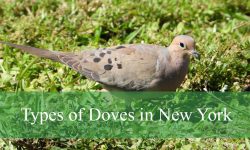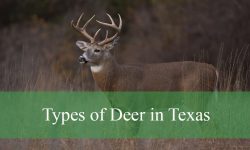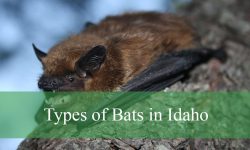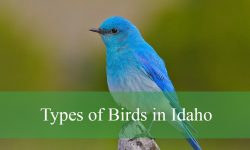North American populations of black and orange snakes are widespread and exhibit a range of morphologies, with a predominance of black and orange colors. Some have similar-colored blotches and scales, while others have speckles or lines in these shades.
Their appearance is as diverse as the landscapes they inhabit. Whether found slithering through the dense forests of the East or basking in the arid deserts of the West, black and orange snakes stand as emblematic figures in the realm of reptiles.
Different Types of Black and Orange Snakes
Gray-Banded Kingsnake
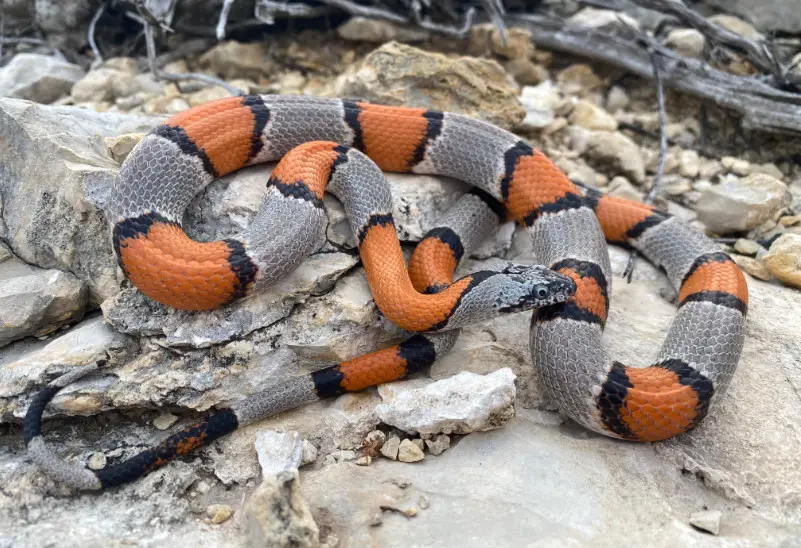
Gray, black, and orange are among the colors that the Gray-Banded Kingsnake (Lampropeltis alterna) displays. Darker morphs frequently have orange tones next to dark gray. Their size ranges from a few inches to three feet, and they are mostly found in regions like New Mexico.
They like limestone-rich desert areas and eat eggs, rodents, lizards, and birds. Although they are not poisonous, they can be mistaken for venomous snakes due to their nocturnal, secretive habits and likeness to them. However, they cannot be bitten by dangerous snakes.
Western Ribbon Snake
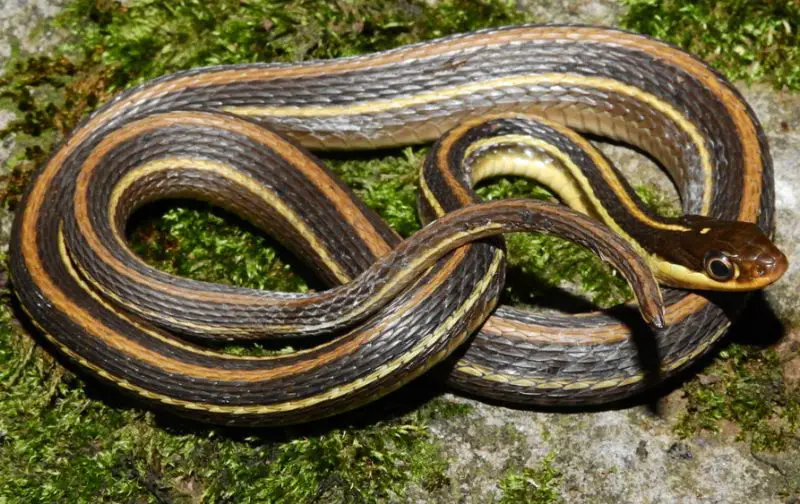
The elongated orange dorsal stripe of the Western Ribbon Snake (Thamnophis proximus) is its defining feature. It contrasts with its body, which is primarily brown or black with lateral yellow bands.
It is a common sight throughout the United States and is frequently confused for the Orange-Striped Ribbonsnake. It prefers areas near water and sandy terrain. Its final hue varies from state to state depending on its surroundings.
They feed on small fish, and the habitat and availability of food affect their size and appearance. Females give birth to live offspring toward the end of summer after mating in the spring.
Banded Watersnake
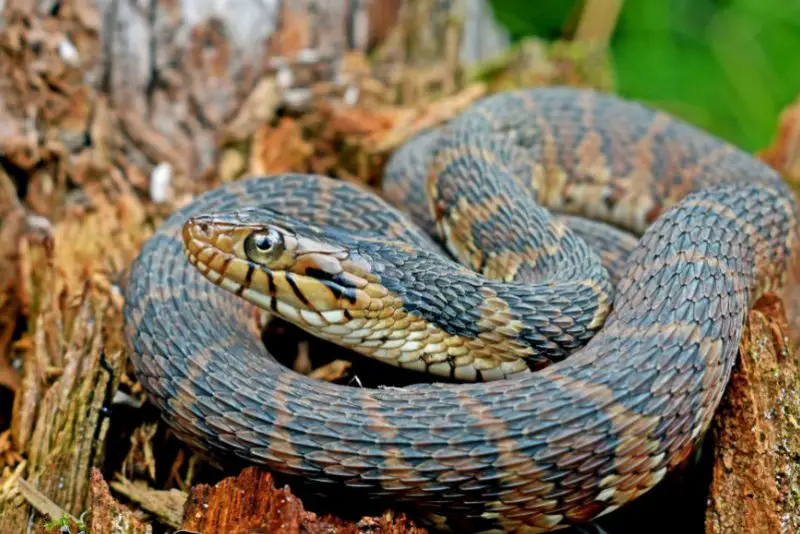
Though brown varieties occur, the Banded Watersnake (Nerodia fasciata), popularly known as the Southern Watersnake, is most usually observed in a stunning black and orange morph.
These snakes, which are larger than Western Ribbon Snakes and primarily black with sporadic orange patterning, resemble Copperheads. Their average length is between 24 and 48 inches.
They can be found in vegetation close to water sources, where they frequently perch on overhanging plants and hunt fish in shallow waters. In the summer, they give birth to at least 15 live young.
Eastern Milksnake
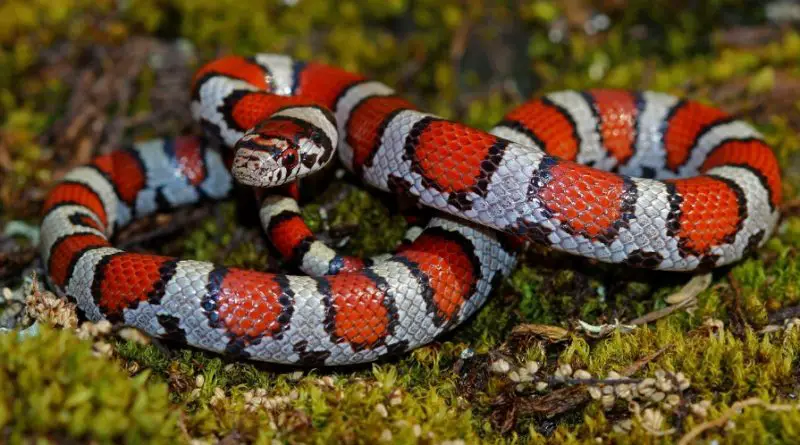
The red body of the Eastern Milksnake (Lampropeltis triangulum) is characterized by brown stripes that are spaced out by orange or yellow bands. They eat a variety of foods, including small mammals like field rats, and are typically found in open environments like farms, prairies, and meadows.
Though usually found in open spaces, they sometimes live in woodlands, where they can have a variety of colors, most frequently showing a reddish-brown color with bands of dark gray and black. Because of their versatility, they may flourish in a variety of settings all over their range.
Red-Bellied Snake
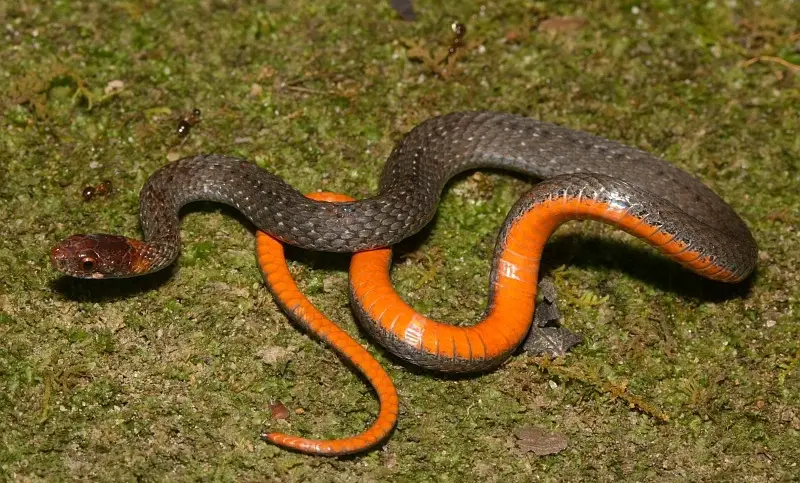
The Red-Bellied Snake (Storeria occipitomaculata), also known as the Redbelly Snake, exhibits various morphs, including a black and orange version where the darker dorsal side contrasts with a lighter underbelly, which may be orange, pink, tan, or brown.
Typically found in forested habitats across Eastern states, excluding Florida, they are often mistaken for Brown Snakes.
Adaptability is evident as they inhabit woodlands and open fields at higher altitudes, thriving wherever slugs, their primary food source, are abundant in mountainous regions of the Eastern US.
Eastern Hognose Snake
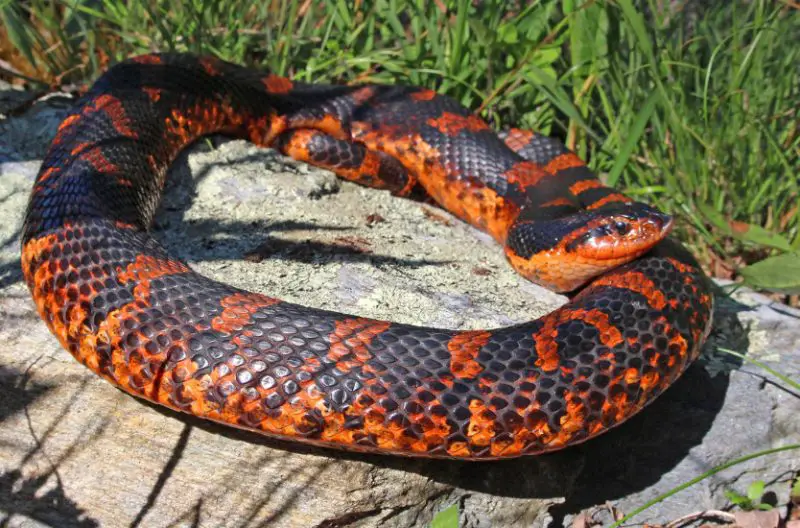
There are several different morphs of the Eastern Hognose Snake (Heterodon platirhinos), commonly called the spreading adder. One of these morphs is orange with black patterns and yellow accents.
The most prevalent kind, on the other hand, has a dorsal with pattern that is either darker gray or black. Reaching a maximum length of 41 inches, they are easily recognized by their characteristic upturned snout. Known for their antics, they pretend to be dead and use simulated attacks to scare off predators.
They are typically found in sandy forests in the Eastern States, although they can also be found near the shore.
Eastern Worm Snake
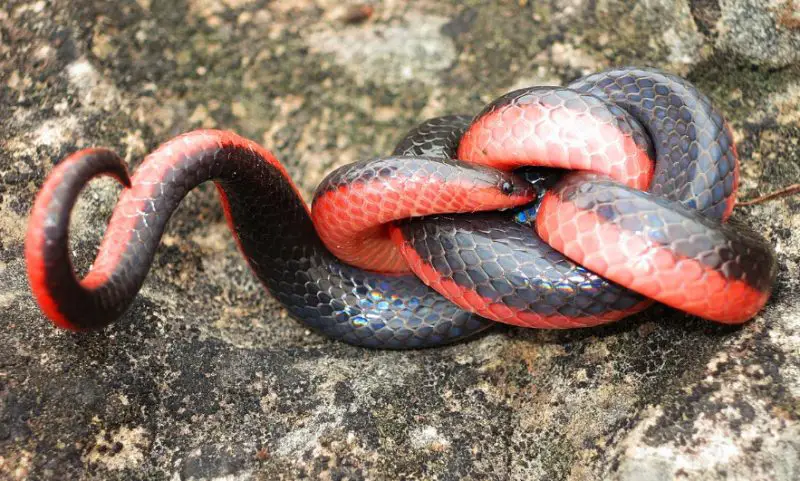
There are several variants of the Eastern Worm Snake (Carphophis amoenus), but the most common one has an orange underside and a black dorsal. Trained to live underground, they are still rather small, growing to a maximum length of 13 inches.
They are good at hiding underground, beneath leaves, logs, or rocks. They are usually found close to woodlands and seaside environments. They are primarily fossorial and come out to catch lizards and small birds. Females may lay one to twelve eggs following mating, which helps ensure the survival of the species.
Northwestern Garter Snake
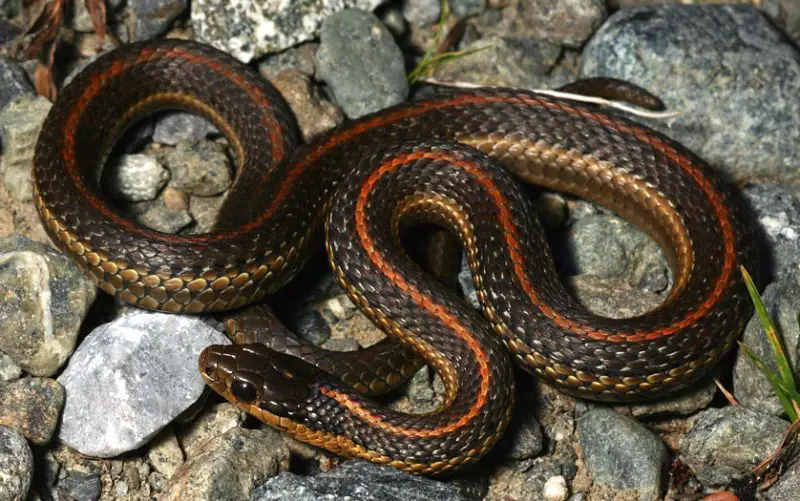
The Northwestern Garter Snake (Thamnophis ordinoides) exhibits considerable color variation, often featuring a distinctive black and orange morph with a visible orange dorsal line.
While adept swimmers, they primarily inhabit terrestrial environments, relying on their venomous saliva to subdue small prey like animals and fish, posing no threat to humans. Skittish around people, they seek refuge in water or other hiding spots.
Often emitting a musky odor when handled, they predominantly feed on slugs, worms, and snails rather than fish.
Long-Nosed Snake
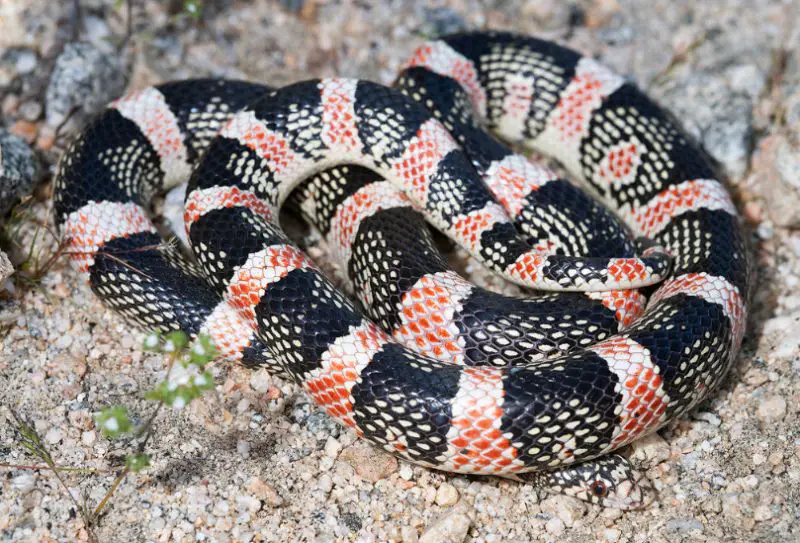
Despite being innocuous, the Long-Nosed Snake (Rhinocheilus lecontei) is sometimes mistaken for dangerous coral snakes due to its orange and black blotched pattern.It is 22–32 inches tall, has an upturned nose, and is a slender, nocturnal feeder.
It is mostly a subterranean predator that avoids conflict with humans by feeding on lizards. It can also discharge blood as a defensive tactic by using its cloaca to generate an offensive stench. Mating and egg-laying are the processes of reproduction; hatchlings appear in late summer.
Plains Garter Snake
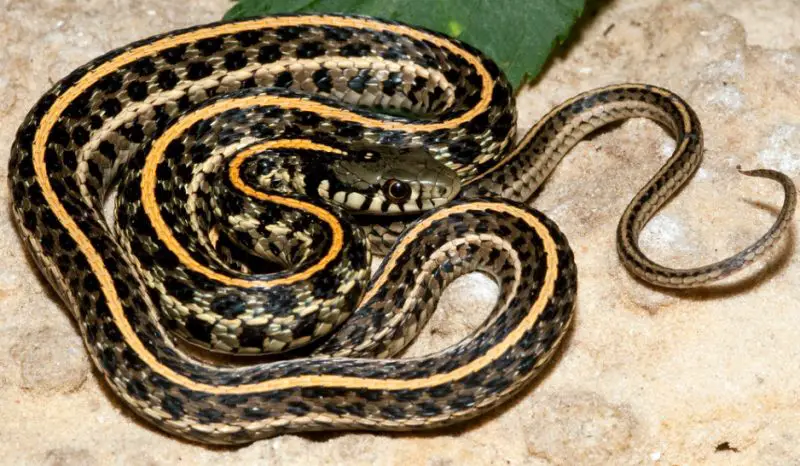
The Plains Garter Snake (Thamnophis radix) is recognizable by its predominantly black body adorned with white scales and a vibrant orange dorsal line. With an olive-green head speckled with white, they are prolific breeders, yielding up to 60 offspring per season. Typically smaller than other North American snakes, they reach lengths of 15 to 28 inches.
Thriving in diverse habitats, from marshes to meadows, they prey on a variety of amphibians and invertebrates, including tadpoles and salamanders.
Aquatic Garter Snake
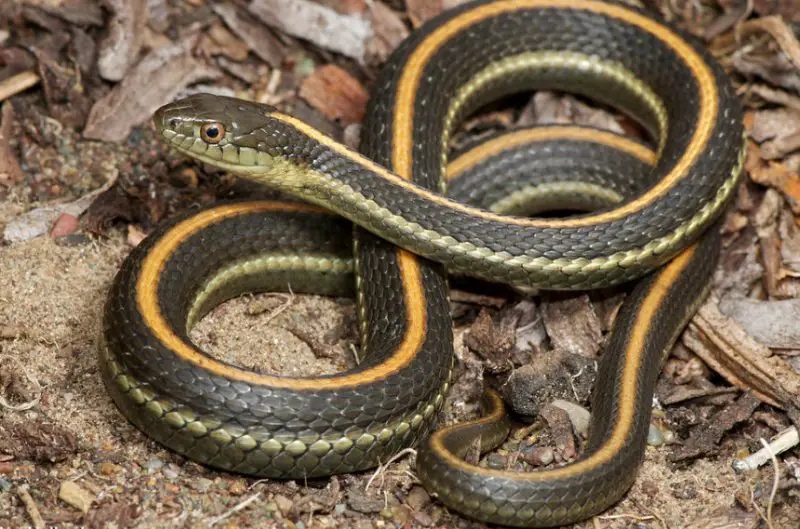
The Aquatic Garter Snake (Thamnophis atratus) displays various morphs, often featuring white speckles on the body. One morph is entirely black with a single orange dorsal line. Preferring habitats near water, like streams and rivers in meadows or rocky areas with riparian zones, they are non-venomous and swallow prey alive due to their inability to constrict.
Typically, only a small litter of around three young snakes emerges after mating, reflecting their reproductive pattern.
Black-Necked Gartersnake
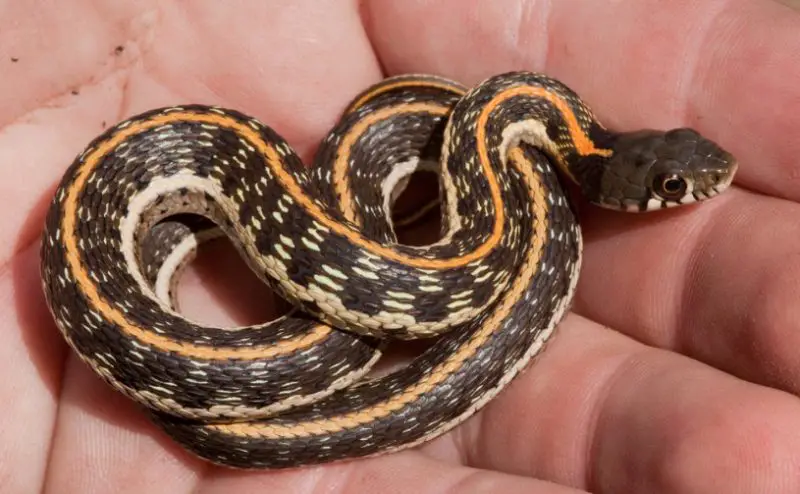
The striking yellow or orange dorsal stripe that runs from the head to the tail contrasts with the dark olive or black body of the Black-Necked Gartersnake (Thamnophis cyrtopsis). It is widespread in Arizona and grows well in grasslands and desert scrub habitats close to water sources.
It feeds primarily on frogs, lizards, and tadpoles, and is busiest at night or on hot summer days. They hibernate over the winter and don’t reappear until April.
Ground Snake
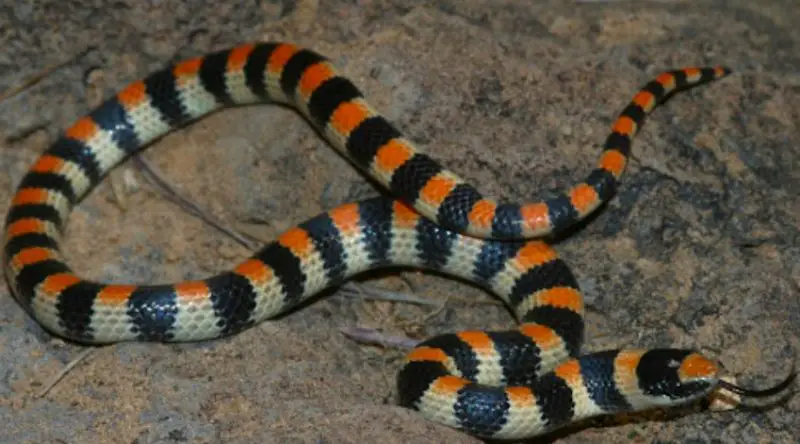
The Ground Snake (Sonora semiannulata) is recognized by its black and orange striped morph, boasting a slender, agile body reaching up to 12 inches in length. Typically diurnal, they prefer hiding underground or under logs but are more visible than other species.
Thriving in remote locations with moisture and vegetation, they prey on spiders, centipedes, and insects. Despite their small size, they fall prey to larger snakes and are targeted by birds, particularly the young.
Sand Snake
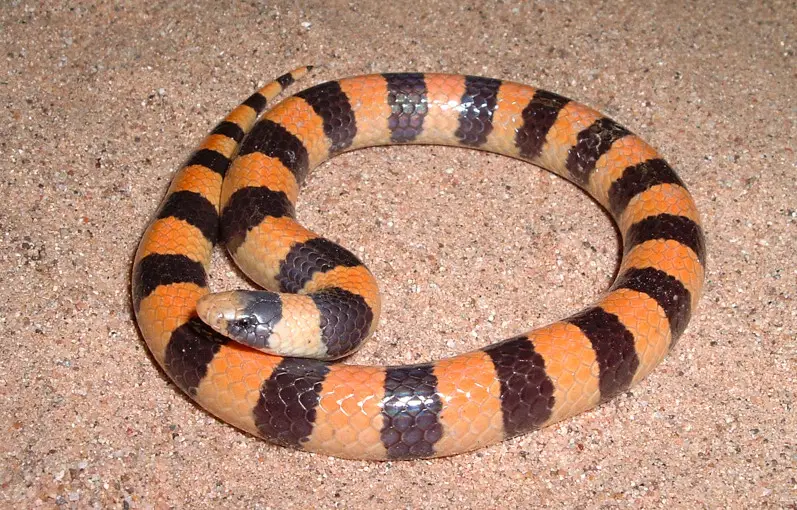
The diminutive size and glossy black and orange body of the Sand Snake (Chilomeniscus stramineus), along with its matching dorsal saddles, are its distinguishing features. It is predominantly a nocturnal burrower and prefers desert settings in the South, so sightings are infrequent.
Eating insects such as centipedes and cockroaches, it is rarely seen outside of its natural habitat, usually on nighttime desert roadways.
Common Garter Snake
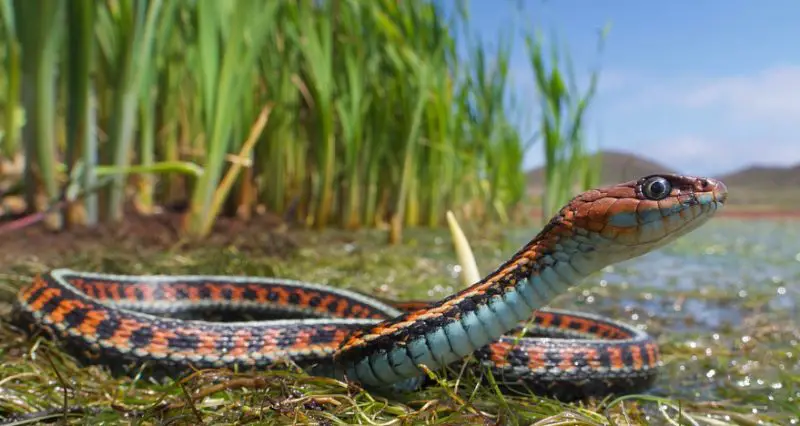
Known for its striking black and white colors, the Common Garter Snake (Thamnophis sirtalis) is a common sight along the California coast. These harmless snakes have bright orange stripes along their sides and a noticeable white dorsal stripe.
They are primarily black in color and have saliva that is somewhat poisonous. Their diet, which consists mostly of worms, rodents, and birds, is aided by their venom in subduing small prey.
Even though they are toxic, larger predators like bass and catfish can still pose a threat to them, especially when they are young or small. These snakes are essential to the health of their ecosystems and can be found in a variety of settings, including marshes and woodlands.
Ring-Necked Snake
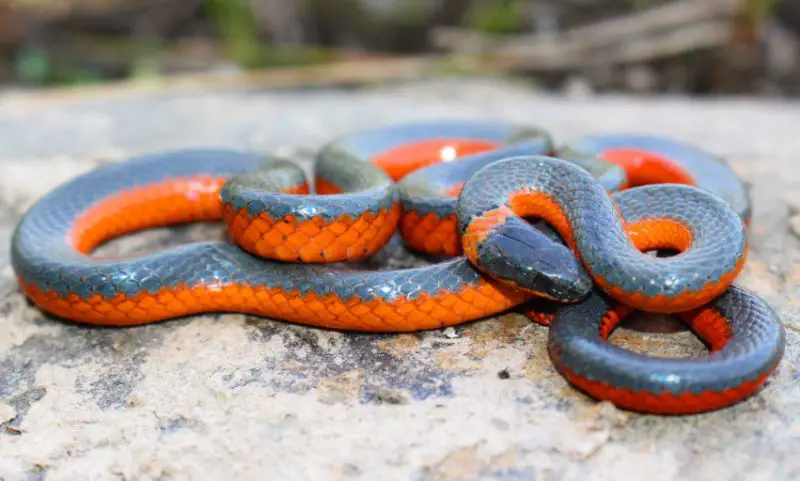
Ring-necked snakes, scientifically known as Diadophis punctatus, exhibit a diverse array of color variations, with black and orange being the most common. Typically, they boast an orange ring encircling their necks and underbelly, complemented by a black dorsal.
Despite their diminutive size, reaching a maximum length of 10 to 15 inches as adults, they wield venomous saliva, primarily targeting invertebrates and occasionally preying on lizards. These elusive creatures prefer subterranean hideaways, seeking refuge under foliage, rocks, or woodpiles.
While predominantly gray with yellow or orange underbellies, a minority don the striking black-and-orange morph, making them stand out among their counterparts in the United States.
Plain-Bellied Watersnake
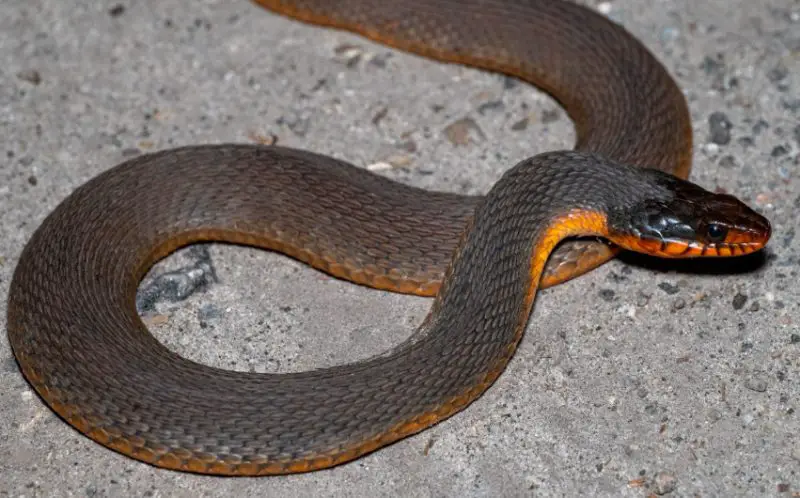
The Plain-Bellied Watersnake (Nerodia erythrogaster) has an orange underside and can take on a variety of morphologies, from gray to black. Its predilection for rivers, ponds, and swamps—especially in Florida’s cypress strands and beside rivers—is indicative of its aquatic lifestyle.
These fierce predators, who mostly hunt aquatic animals like fish and amphibians, are unable to restrain their prey and must instead use their mobility.
They give birth to live young, unlike many non-venomous species; females can give birth to up to 25 offspring a year once they reach sexual maturity, which can take several years.
Western Terrestrial Garter Snake
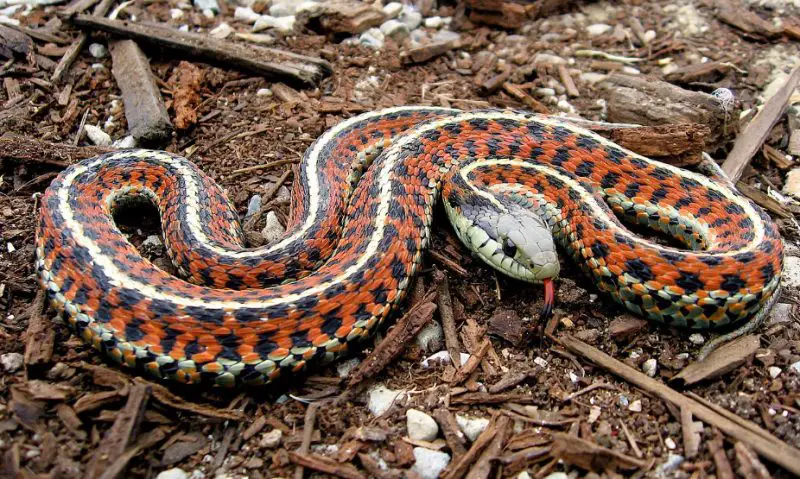
With a maximum length of 41 inches, the Western Terrestrial Garter Snake (Thamnophis elegans) is a versatile species that can be found throughout Western North America. It comes in a range of morphologies, but a common one is primarily orange with black specks and white dorsal stripes.
Though their bites can occasionally cause skin reactions, their primary weapon is their deadly saliva, even though they are only weakly venomous. They use constriction to hunt, unlike a lot of garter snakes, though not as successfully as other constrictors.
This species is characterized by its adaptability; it can live in lowlands, high altitudes, and even aquatic conditions like ponds, lakes, and rivers in some parts of Western North America.

